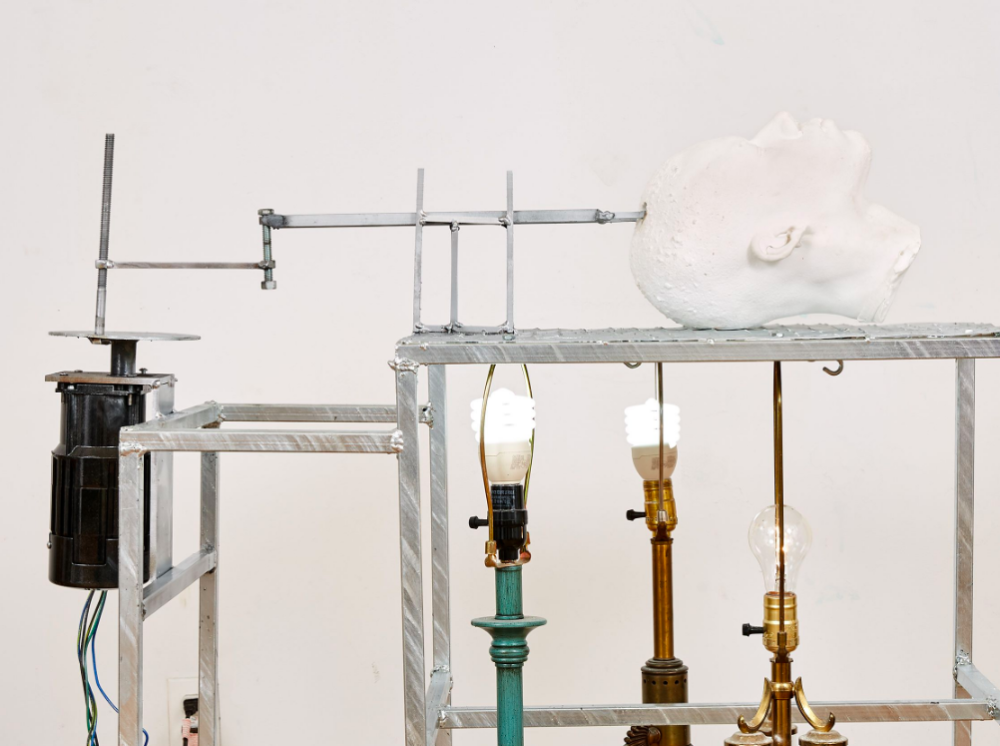Cold sheets of perforated metal gnaw quietly at severed plaster limbs inside Matthew Brown’s La Brea gallery. Despite the unsettling horrors this description might conjure, Jeffrey Meris’ exhibition, “be ever wonderful,” is deceptively healing and hopeful.
A series of mechanized assemblage sculptures titled “Now You See Me, Now You Don’t” depict pieces of the artist’s body cast in plaster that rest atop galvanized steel surfaces that feel sterile, almost surgical. Severed, brittle, and pale, the artist’s limbs are slowly shaved down into piles of dust, accumulating on the ground and surface of the sculptures over the course of the exhibition. Victorian tea cups and antique light fixtures appear as parts or gears of the apparatus. While these “human mills” are violent and visceral, if there is an overarching theme in Meris’ exhibition, it is one of care and healing. In a series aptly titled “Care Paintings,” the artist stitches together t-shirts used to care for and maintain the kinetic sculptures. Mounted on scraps of black roofing material, traces of plaster from casts of the artist’s body form cloudy cosmic constellations (a subtle nod to David Hammons’ body prints). Born in Haiti, Meris’ use of reclaimed materials are particular to the terrain of the Caribbean—this thin roofing material is often found strewn across town after a storm—connecting the work to the artist’s personal and embodied experience.
Live orchids cascade out of showering constellations of metal and electrical wiring. Meris thinks of these installations as fireworks—significations of rebirth and freedom—and lively assemblages that require care. Of course, Orchids are also tethered to the brutal legacy of colonialism. Interested in the ecological implications of Meris’ work, I’m reminded of Deleuze and Guattari’s words on orchids in A Thousand Plateaus: “the orchid deterritorializes by forming an image, a tracing of a wasp; but the wasp reterritorializes on that image. The wasp is nevertheless deterritorialized, becoming a piece in the orchid’s reproductive apparatus. But it reterritorializes the orchid by carrying its pollen. … a becoming-wasp of the orchid and a becoming-orchid of the wasp. Each of these becomings brings about the deterritorialization of one term and the reterritorialization of the other.”
Matthew Brown
712 N La Brea Ave
Los Angeles, CA 90038
On view through June 30, 2022


